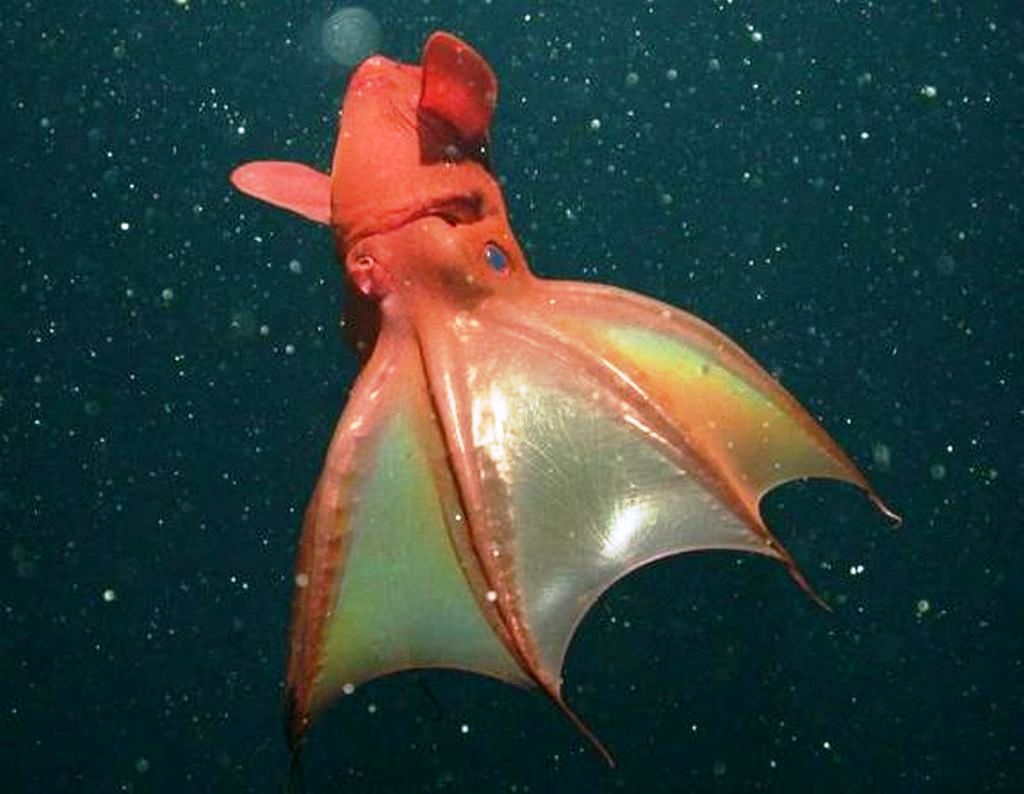The vampire squid, a fascinating creature of the deep sea, captures the imagination of marine enthusiasts and scientists alike. This unique cephalopod, known scientifically as *Vampyroteuthis infernalis*, thrives in the dark depths of the ocean, displaying remarkable adaptations that allow it to survive in extreme conditions. In this article, we will delve into the intriguing world of the vampire squid, exploring its biology, habitat, behavior, and the significance of this enigmatic organism within the marine ecosystem.
As we unravel the mysteries of the vampire squid, we will address its unique characteristics that distinguish it from other cephalopods, as well as its role in the deep-sea food web. Furthermore, we will examine the conservation status of this species and the challenges it faces due to changing oceanic conditions. By the end of this article, you will gain a comprehensive understanding of the vampire squid and its importance in our marine world.
Join us in this deep dive as we explore the depths where the vampire squid resides and discover why this remarkable creature is worthy of our attention and protection.
Table of Contents
- Biography of the Vampire Squid
- Physical Characteristics
- Natural Habitat
- Diet and Feeding Habits
- Behavior and Adaptations
- Reproduction and Life Cycle
- Conservation Status
- Conclusion
Biography of the Vampire Squid
The vampire squid, or *Vampyroteuthis infernalis*, was first described in 1903 by the American zoologist Carl Chun. This species belongs to the order Vampyromorpha, which is considered to be a unique group of cephalopods distinct from octopuses and squids. The term "vampire squid" is derived from its dark coloration and the cloak-like webbing that extends between its arms, reminiscent of a vampire's cape.
Personal Data and Biodata
| Attribute | Description |
|---|---|
| Scientific Name | *Vampyroteuthis infernalis* |
| Common Name | Vampire Squid |
| Habitat | Deep-sea environments, primarily in the oxygen minimum zone |
| Size | Approximately 30 cm (1 ft) in length |
| Diet | Detritus, marine snow, and small organisms |
| Conservation Status | Not currently endangered, but habitat is threatened |
Physical Characteristics
The vampire squid possesses a number of unique physical traits that set it apart from other cephalopods. Here are some of its notable characteristics:
- Size: Typically, vampire squids grow to about 30 cm (1 ft) in length.
- Coloration: They have a dark reddish-brown body with bioluminescent organs that can produce light.
- Webbed Arms: Their arms are connected by a webbed membrane, giving them a distinctive appearance.
- Eyes: Large, sensitive eyes adapted for low-light environments.
Natural Habitat
The vampire squid inhabits the dark depths of the ocean, typically found at depths of 2,000 to 3,000 feet (600 to 900 meters). This region is characterized by low light and low oxygen levels, known as the oxygen minimum zone (OMZ). The vampire squid has adapted to thrive in this challenging environment, where few predators can survive.
Key features of their habitat include:
- Oxygen Minimum Zones: Areas of the ocean where oxygen levels are extremely low.
- Temperature: Cold temperatures that range from 2°C to 10°C (36°F to 50°F).
- Deep-Sea Ecosystem: A unique ecosystem that includes various organisms, some of which serve as food for the vampire squid.
Diet and Feeding Habits
The vampire squid has a unique feeding strategy that distinguishes it from other cephalopods. Unlike many of its relatives that are active hunters, the vampire squid primarily feeds on detritus, marine snow, and small organisms that drift in the water column.
Key points regarding its diet include:
- Detritus Feeders: They consume organic matter that falls from the upper layers of the ocean.
- Feeding Adaptations: They possess long, sticky filaments that help capture food particles.
- Slow Metabolism: Their slow metabolism allows them to survive in nutrient-poor environments.
Behavior and Adaptations
The vampire squid exhibits several fascinating behaviors and adaptations that enable it to survive in its deep-sea environment:
Defensive Mechanisms
To protect itself from predators, the vampire squid has developed unique defense mechanisms, such as:
- Bioluminescence: The ability to produce light to confuse predators.
- Ink Release: Similar to other cephalopods, they can release ink to create a smokescreen.
Swimming and Movement
Unlike many squids that rely on jet propulsion, vampire squids swim using a gentle undulating motion of their webbed arms, conserving energy in the low-oxygen environment.
Reproduction and Life Cycle
Reproduction in vampire squids is not well understood due to the challenges of studying them in their natural habitat. However, it is believed that:
- Eggs: Female vampire squids may lay eggs that are attached to the substrate.
- Life Span: They are thought to have a lifespan of 5 to 8 years.
Conservation Status
The vampire squid is currently not listed as endangered; however, it faces potential threats due to changing ocean conditions and habitat degradation. Key concerns include:
- Climate Change: Rising ocean temperatures and changing oxygen levels may impact their habitat.
- Pollution: Increased pollution in the ocean can affect the availability of food resources.
Conclusion
In summary, the vampire squid is a remarkable creature that exemplifies the wonders of deep-sea life. With its unique adaptations, intriguing behaviors, and vital role in the marine ecosystem, it is deserving of our attention and protection. As we continue to learn more about this enigmatic species, we must be proactive in ensuring the health of our oceans and the survival of its inhabitants.
We invite you to share your thoughts on the vampire squid in the comments section below, and don't forget to explore more articles on marine life for a deeper understanding of our planet's incredible biodiversity.
Final Thoughts
Thank you for joining us in this exploration of the vampire squid. We hope you found this article informative and engaging. Be sure to return to our site for more fascinating insights into the world of marine biology and beyond!




